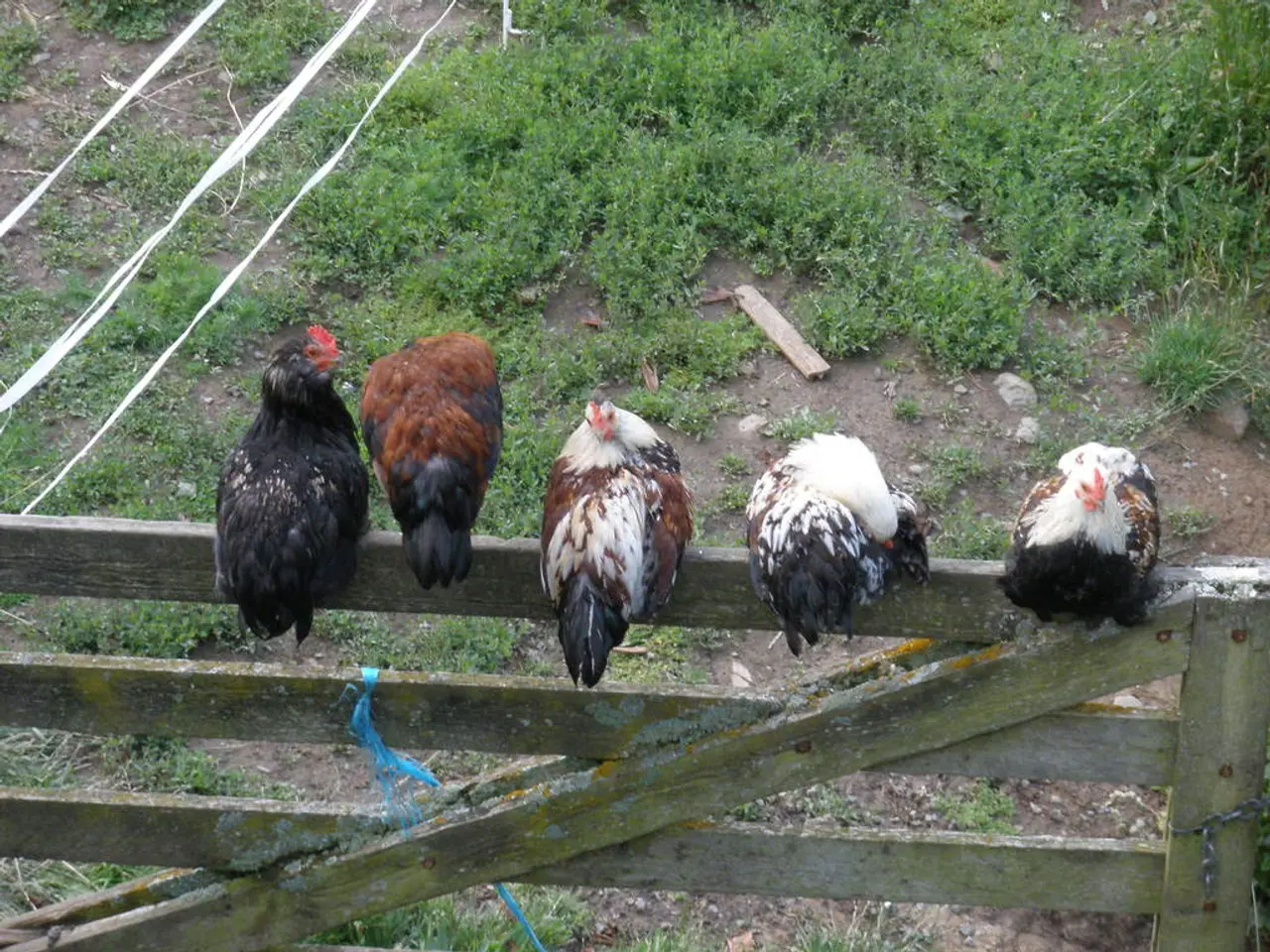Farmers Warned: Scaly Leg Mites Threaten Chickens
Local poultry farmers are warned about a common yet preventable infestation: scaly leg mites. These tiny, burrowing parasites can cause significant discomfort and damage to chickens if left untreated.
Scaly leg mites, scientifically known as Knemidocoptes mutans, are microscopic creatures that live on the legs and feet of chickens. They spend their days digging tunnels, laying eggs, and feeding on the tissue of their hosts. The first sign of an infestation is a lifting of the chicken's scales on the legs and feet. As the infestation progresses, crusting and hardening of the affected area occurs, which can lead to lameness, deformed feet, and joint mobility loss. In severe cases, the mites can infest the comb, wattles, neck, and even the beak.
Prevention is key in managing these mites. Maintain strict hygiene by regularly cleaning the living environment, removing dust and manure, and providing fresh air and sunlight. Keep social groups stable to manage stress and consider targeted treatments under veterinary guidance when needed. A balanced diet also supports the birds' resistance against infestations. Regular inspections help catch early signs and enable prompt action.
Treatment involves smothering the mites using petroleum jelly, Shea butter, coconut oil, or paraffin oil, applied daily until new scales grow back. Ivermectin can also be used orally or topically, but it is not labeled for use in chickens and requires an egg withdrawal period of 21 days.
Scaly leg mites have a life cycle of ten to fourteen days, making prompt action crucial to prevent the spread. Farmers are advised to stay vigilant, maintain good hygiene, and seek veterinary advice when necessary to keep their poultry healthy and productive.




